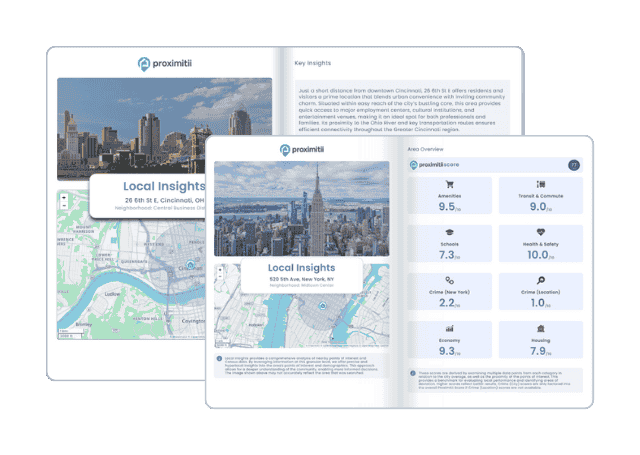| Statistic | Reportedincidents | Upper Hill/100k people | Pittsburgh/100k people | Pennsylvania/100k people | National/100k people |
| Total crime | 8,587 | 2,885 (estimate) | 2,707 | 1,681 | 2,119 |
| Murder | 36 | n/a | 11.4 | 5.0 | 5.0 |
| Rape | 164 | n/a | 51.7 | 27.8 | 37.5 |
| Robbery | 394 | n/a | 124.2 | 51.4 | 60.6 |
| Assault | 761 | n/a | 239.9 | 161.4 | 256.1 |
| Violent crime | 1,355 | 384 (estimate) | 427 | 246 | 359 |
| Burglary | 738 | n/a | 232.7 | 116.7 | 229.2 |
| Theft | 5,406 | n/a | 1,704.4 | 1,129.8 | 1,272.1 |
| Vehicle theft | 1,088 | n/a | 343.0 | 188.5 | 258.8 |
| Property crime | 7,232 | 2,501 (estimate) | 2,280 | 1,435 | 1,760 |



Why stop at city-to-city? With Local Insights, you can compare neighborhoods, zip codes, or even exact addresses. Access 300+ hyperlocal data points—from schools and crime to housing and amenities—to see which area is the better fit.

| Item | Upper Hill | Pittsburgh | Pennsylvania |
| Law enforcement employees (officers & civilians) | n/a | 947 | 14,701 |
| Police officers & civilians /1000 residents | n/a | 3.0 | 1.8 |
| State | Total offenders | Pennsylvania /100K | National /100K |
| Pennsylvania | 21,558 | 176 | 266 |
| City | Population | Violent crime/100k people | Property crime/100k people | Total crime/100k people |
| South Heights, PA | 310 | 0 | 0 | 0 |
| Port Vue, PA | 3,673 | 0 | 28 | 28 |
| Turtle Creek, PA | 5,161 | 21 | 41 | 62 |
| Irwin, PA | 3,773 | 43 | 87 | 130 |
| Heidelberg, PA | 1,228 | 0 | 163 | 163 |
| Edgeworth, PA | 1,527 | 0 | 186 | 186 |
| Bell Acres, PA | 1,514 | 0 | 207 | 207 |
| Pittsburgh, PA | 301,286 | 427 | 2,280 | 2,707 |
| City | Population | Violent crime/100k people | Property crime/100k people | Total crime/100k people |
| Cincinnati, OH | 302,687 | 846 | 3,829 | 4,675 |
| St. Louis, MO | 304,709 | 1,367 | 5,707 | 7,074 |
| St. Paul, MN | 305,877 | 618 | 2,834 | 3,452 |
| Greensboro, NC | 294,395 | 924 | 3,383 | 4,307 |
| Henderson, NV | 309,955 | 272 | 1,715 | 1,987 |
| Pittsburgh, PA | 301,286 | 427 | 2,280 | 2,707 |